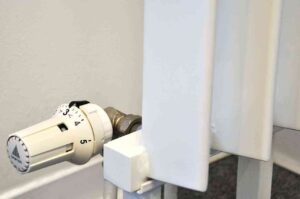Here’s the American English translation:
—
The advancement of technology has opened new doors for individuals with severe disabilities, such as amyotrophic lateral sclerosis (ALS), facilitating their communication and autonomy. A clear example of this impact is activist and YouTuber Jordi Sabaté, who has used eye-trackers to connect with the world, even participating in Senate interventions and interviewing figures like Penélope Cruz. His story illustrates how these tools can transform the lives of those who use them.
Eye-trackers, devices that capture the user’s eye movement on a screen, allow control of various functions simply by looking. Thanks to this innovation, people with reduced mobility can browse the internet, send messages, and use entertainment and learning applications on equal terms with those using conventional devices. These devices are integrated into computers or tablets and come with specialized software that adapts to each user’s needs.
In Spain, the company Qinera has positioned itself as a leader in the distribution of this technology developed by Tobii Dynavox. Its mission is to facilitate access to these devices for a growing number of individuals who have faced significant communication limitations until now. Although since 2019, the Spanish government has implemented incentives to finance eye-trackers, access to these resources remains unequal across different autonomous communities. To address this situation, Qinera collaborates with hospitals and specialized centers, optimizing processes to bring this technology to those who need it most.
Nair Alcocer, an occupational therapist and service manager at Qinera, emphasizes the importance of support during the process of obtaining and adapting these devices. This assistance not only ensures access but also allows for personalized installation and training tailored to each user, which are fundamental factors in maximizing the utility of these tools.
Eye-trackers not only enhance their users’ communication but also enable them to enjoy a more fulfilling life. They serve as a bridge to independence and social integration, providing the opportunity to learn, work, and socialize with greater freedom. The ability to communicate effectively is crucial, especially for those facing mobility limitations.
Recent studies indicate that the use of eye-trackers can significantly improve the quality of life for individuals with severe motor disabilities, even doubling their perception of well-being. Qinera not only provides the technology but its real contribution lies in offering a comprehensive service that includes training, adaptation, and support in using these devices.
The most advanced models, such as the PCEye 5 from Tobii Dynavox, allow users to control a computer solely through their gaze, regardless of their physical or visual conditions. This integration with everyday operating systems and applications further facilitates interaction with the digital world, positioning those who require these technologies on equal footing in social participation.
—
Let me know if there’s anything else you need!
via: MiMub in Spanish











